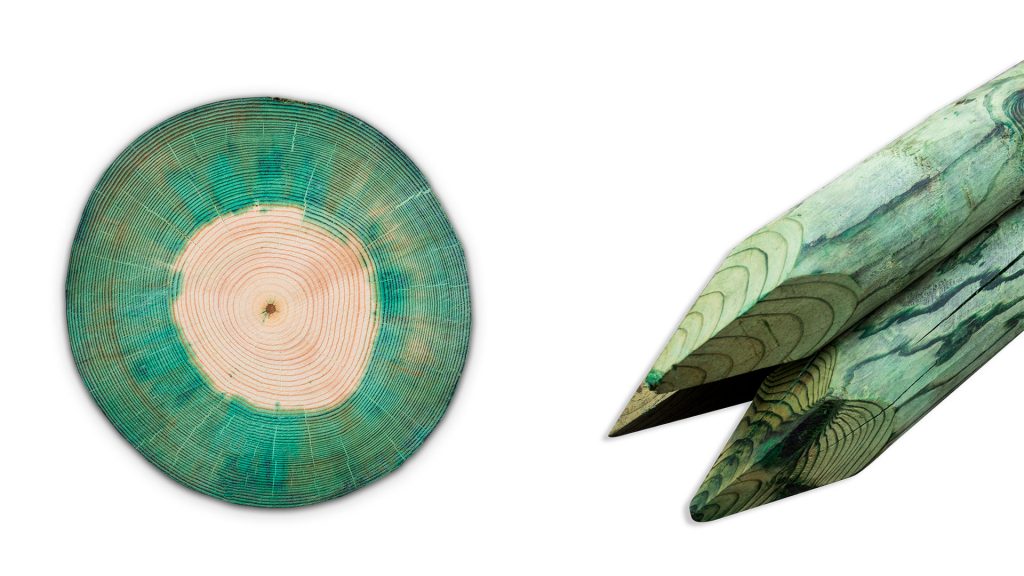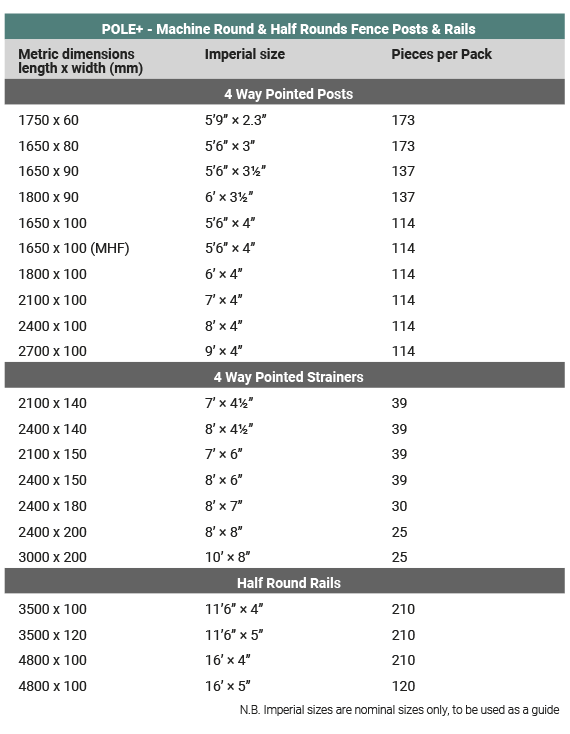FAQ – Pole+
1.What is Scanpole?
Scanpole is a family-owned company based in Finland. We started making high-quality wooden posts in 1848 as a small company called Burt, Boulton and Haywood. Even though we’ve expanded our operations to a global scale, we still make the same, high-quality products. Our product range includes both utility poles and fencing posts, and 100% of our products are made using slow grown Nordic Scots Pine. We’re proud to say that we regularly partner with some of the biggest telecommunications companies in the UK, including BT (British Telecom) and SSE (Scottish & Southern Electricity), so if you use electricity, a Scanpole utility pole probably helped transport the electricity to your home. With creosoted fencing posts soon to be no longer available, we’re pleased to announce that the next generation of fencing posts is available for purchase now. Scanpole Pole+ fencing posts combine the water resistant properties of oil, the biocidal properties of copper, and the sturdy qualities of slow-grown Nordic pine to make a product with a designed service life of over 40 years.
2. How can I know that Pole+ products have a 40-year service life?
Our chemical partners in developing Pole+, have been running tests for over 10 years that were measured by European technical standards for wood preservation. This process involved rigorous field and laboratory tests, where samples were exposed to high levels of temperature and humidity. Our new preservation agent was tested against creosote, and the results showed a service life of over 40 years. Further field tests are currently being conducted across more than 10 countries, including the UK and Ireland, and after a decade, Pole+ products are performing just as well as creosoted products.
3. I’ve heard that Pole+ contains copper. Will copper perform as well as creosote?
Yes, Pole+ products are designed to perform as well as creosote products. Scanpole Pole+ products contain more than twice the amount of copper used in conventional fencing. Our new impregnation process ensures that copper oil preservative goes all the way through the sapwood. Pole+ products combine the water resistant properties of oil, the biocidal properties of copper, and the natural durability of slow-grown Scots pine to make fencing poles that are designed to last for generations.

4. Which products are available in the Pole+ range?
We currently offer a range of machine round fencing posts, strainers, and half-round rails in our most popular sizes.

Looking for a product that isn’t on our list? Let us know what you’re looking for at sales.bbh@scanpole.com; we’ll be expanding our product range soon.
5. Is Pole+ safe for humans and animals?
Yes. The preservative used in Pole+ products has been granted authorization across Europe under the Biocidal Products Regulation (BPR). Rigorous testing of the preservative found that there was no risk for professionals, non-professionals, or the general public when coming into contact with Pole+ timber. Scanpole Pole+ products can be used safely in any environment, even in domestic settings such as schoolyards and playgrounds. Please note that Pole+ products have not been designed for this application, but that the assessment under the BPR concluded the safety of the products in question.
6. Will horses crib Pole+ fencing products?
No. Tests run by our chemical partner in developing the Pole+ preservative, found that after two years in use, there was no evidence of cribbing on any fencing treated with the preservative.
7. Why is the treated timber green?
The high levels of copper in the preservative cause the Scanpole Pole+ timber to take on a bright green color. These new products are a much brighter green when compared to older preservatives. This is because Scanpole Pole+ products have over double the amount of copper used in conventional water-based copper preservatives.
8. Does the colour change over time?
Yes. As your fencing posts are exposed to sunlight, the timber will fade from a bright green to a warm, honey brown. As the years pass, the brown color will eventually darken to a natural grey, similar to the colors in aged creosote fencing.
9. Does cut timber require a cut-end brush on product to be applied?
We would always advise you to use a cut-end sealer when cutting timber, due to the risk of exposing untreated heartwood. The base oil of stays mobile in the timber without hardened like other oils. This means that, similar to creosoted products, Pole+ products can ‘self-heal’ when cracks appear.
10. Is Scanpole Pole+ treated timber classified as hazardous waste?
The waste classification status of Scanpole Pole+ products depends on multiple factors (product retention in wood, timber density, percentage of sapwood, etc.). Wood treated with the Pole+ preservative agent is classified as non-hazardous waste in many situations, but calculations must always be done on a case-by-case basis.
Scanpole Pole+ products must not be used for animal litter or bedding, or as fuel for barbecues, cooking stoves or grates. Any waste timber from Scanpole Pole+ products should preferably be reused or disposed of at an authorized landfill.
11. Where are Scanpole Pole products made?
Scanpole Pole+ products are all made in Norway using Norwegian Scots pine in same factory that has been making high quality telecom and utility poles since 1935.
See Scanpole Pole+ utility poles in operation in with Norwegian electricity company Electrix AS.